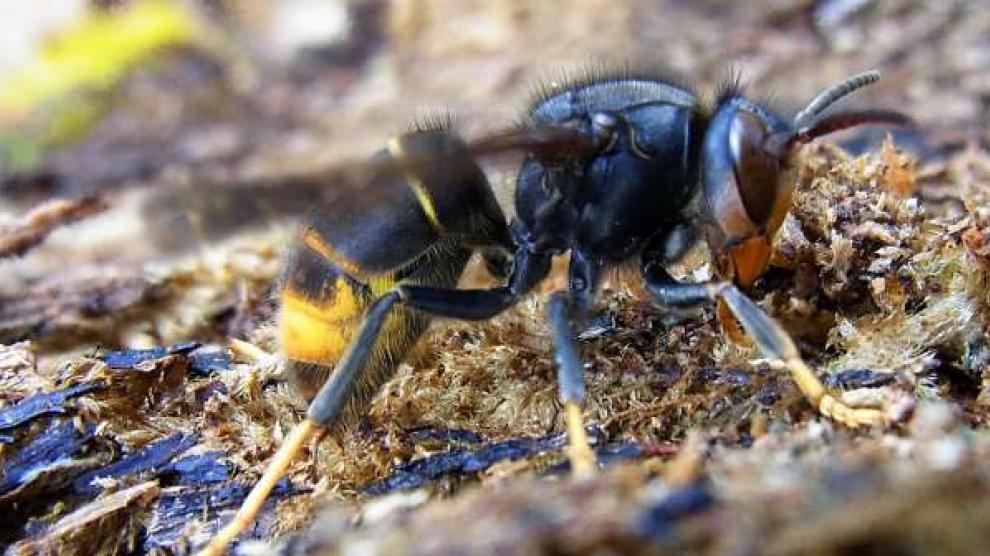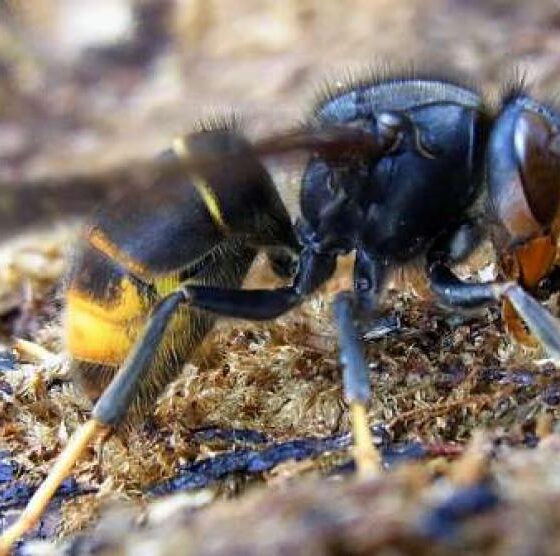

Animals
Asian hornet threat growing in Spain
In Spain, invasive species are a growing problem. This is the case of the velutina wasp, or Asian yellow-legged hornet, which in the last year has proliferated at a dizzying speed. So much so, that in Galicia it already has a greater presence than the native wasps themselves, which is causing significant health, economic and environmental problems.
According to data from the Xunta de Galicia, this insect has multiplied in 2023 by 56% -compared to 2022-. Notifications and calls for their presence already exceed 43,000 -to date-, well above the 27,500 registered in 2022. However, the Pontevedra City Council assures that “we could speak of up to 10 nests per square metre.”
Due to its large presence, in Galicia it has already become “a serious risk for human health” due to its bites, which “can trigger serious allergic reactions,” explains Xesús Feás, member of the Academy of Sciences.
After an unusually warm spring, the number of nests has increased
The nests of the aggressive velutina are multiplying in Galicia: “If you are unlucky enough to stumble upon it, you have a problem”.
According to the data offered by a study by Feás himself, (human deaths from wasp, wasp and bee stings in Spain: epidemiology at the state and substate level from 1999 to 2018) between 1999 and 2018 there were 78 deaths in Spain due to stings from hornets, wasps or bees.
Of these, 28 took place in Galicia. However, the situation for this community is even more serious if the mortality rate per million inhabitants is observed. This figure ranges in Spain between 0.02 and 0.15 deaths, while in Galician territory it is 2.2, which clearly shows the problem that this community has.
Economic and environmental problems
Health risks are not the only problem, and it also has a great impact on the economy. This specimen feeds on 80% bees. This has a very detrimental impact, because in the end, Feás details, it is “a very special livestock farm” that is raised “to take advantage of its products.” As a consequence, “honey losses are already around 65% of bee colonies” in places where this wasp is widely established.
Due to this situation, the beekeeping sector is also being greatly diminished, as beekeepers are forced to carry out a series of measures to protect their hives. These fighting methods “cost almost 8 million euro annually”, which represents 10% of the value of honey, explains Mariam Ferreira, researcher at the University of Santiago de Compostela and member of the Atlantic Positive project.
The fruit sector is also suffering from its presence. The greatest consequences are already seen in wine cultivation, since the wasps eat the grapes. “If they don’t eat it completely, they leave a wound that can ruin the entire bunches.”
“Social alarm is also a factor to take into account,” since people “are really afraid” when they go out into the street after seeing news about it. Although “it is not more aggressive than other species,” as it is everywhere and “has nests everywhere,” says Feás, the risk of being bitten is greater.
This situation is also causing “some fear” in some areas of tourist activity. Even, Ferreira assures, some professions are also being affected: “There is fear in certain forestry jobs or in fruit picking.”
It will continue to spread
“The expansion is being very strong,” comments Ferreira, so the forecasts indicate that it will reach “the entire national territory,” confirms Feás along the same lines. “it is already found in León or Aragón as well,” says Jorge Galván, general director of the National Association of Environmental Health Companies (ANECPLA). He details that this is because it is “able to adapt very well”, as it has great invasion power because “it has no competition” from other predators.
This is due to several factors. The first of them, as it could not be otherwise, is climate change. This summer’s temperatures have greatly favoured the development of this species and have contributed to other insects also procreating, says Feás.
Until now “in winter there were no insects, since they began to appear in spring and disappeared at the end of summer.” However, global warming has caused spring to start earlier and autumn to end later. This means that “the reproduction window opens”, so now this wasp can be seen for longer, and in addition, “it reproduces more times”, explains Galván.
Human beings also influence this problem. Globalisation, hand in hand with “freight transport” also contributes to its proliferation. In fact, the director of ANECPLA also compares it to the tiger mosquito, which arrived in Spain on tyres from China.
Life habits also influence these insects to procreate, sometimes with very simple actions that we do not even realise. If, for example, someone who lives in Asturias travels to Madrid, he can carry any type of mosquito, wasp or insect in his car. If one of these lays eggs and breeds, the species in question can settle anywhere. “These trips mean that we are unintentionally moving those species from one place to another,” Galván concludes.
Complaints due to lack of foresight
To try to deal with this growing problem, experts use some “control” systems, such as electric harps, the reduction of the piqueras – entrance holes to the hive – or “trapping”, explains Ferreira. The latter “is the most widespread method”, although it is not the most selective, since “other animals that may be beneficial” for the ecosystem also ‘fall’.
For this reason, the Ministry for the Ecological Transition and Demographic Challenge (MITECO) is already “working on other types of traps that allow for much more selective captures.” The objective is to reduce the capture of other species, as Ricardo Gómez, Head of Service of the General Subdirectorate of Terrestrial and Marine Biodiversity of MITECO explained.
Although the ministry, according to Gómez, “has a control plan in coordination with all the autonomous communities,” Feás assures that “the work that should be done to tackle the problem is not being carried out.” Therefore, according to his opinion, greater foresight should be made , because once this species settles in new areas, “combating bites, removing nests or damaging hives becomes very expensive.”
Feás assures that if the Administration does not take action on the matter with new prevention plans, “we will have to learn to live” with velutina. In this way, although eradicating it “is very difficult”, it is not impossible either. To do this, he proposes greater investment to be able to carry out “genetic manipulation techniques or captive care.” “You need a management plan, someone to direct the orchestra,” he concludes.
The post Asian hornet threat growing in Spain appeared first on Spain Today – Breaking Spanish News, Sport, and Information.
-

 News1 week ago
News1 week agoOlive oil to join zero rate IVA from July
-

 Court News1 week ago
Court News1 week agoFour years in prison for hitting woman who didn´t want to have sex without a condom
-

 Health2 weeks ago
Health2 weeks agoSpain breaks bone marrow transplant record
-

 Health2 weeks ago
Health2 weeks agoThe Minister of Health presents the campaign “A summer of care” to promote good habits in the face of high temperatures




















